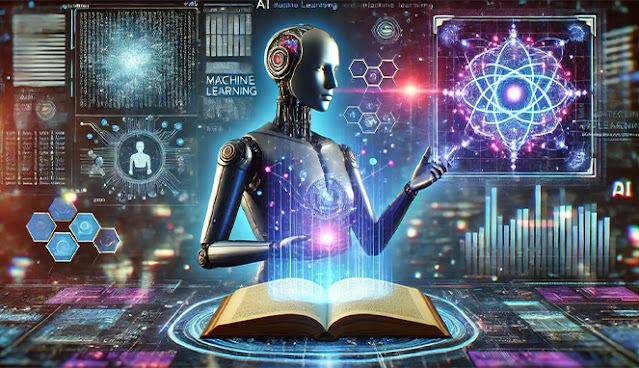Interactive storytelling has evolved significantly with the advent of artificial intelligence (AI). Machine learning in interactive storytelling plays a crucial role in enhancing interactive narratives by dynamically adapting storylines based on user interactions. AI-powered tools, including AI algorithms and language models, help create compelling stories that offer immersive experiences. This article explores how artificial intelligence AI is transforming interactive stories, its key applications, and future possibilities.
What is Machine Learning in Interactive Storytelling?
Machine learning in interactive storytelling refers to the use of AI-driven algorithms that analyze user interactions and generate dynamic narratives. By leveraging artificial intelligence AI, these systems can create interactive stories that adapt to individual player choices, ensuring a unique and engaging experience. This technology enables personalization and interactivity by continuously learning from user inputs and modifying the story elements in real time.
AI-powered storytelling systems utilize natural language processing, reinforcement learning, and neural networks to understand player behavior and predict potential outcomes. These machine learning algorithms analyze vast amounts of data to craft compelling stories that resonate with the audience. The integration of AI-generated content enhances creative expression, allowing interactive narratives to evolve dynamically based on real-time decision-making.
The role of AI in storytelling extends beyond simple branching narratives, offering deeper character AI interactions and emergent storylines. By using advanced AI algorithms, developers can design immersive experiences where user interactions shape the narrative organically. This continuous evolution of AI-driven storytelling is transforming how audiences engage with digital content, making interactive stories more adaptive and responsive than ever before.
How Machine Learning Enhances Interactive Storytelling
Machine learning revolutionizes interactive storytelling by enabling AI-driven narratives that adapt in real-time. These technologies create immersive experiences, enhancing personalization and interactivity based on user interactions and preferences.
1. Personalized Storylines
Machine learning algorithms analyze user interactions, preferences, and decision patterns to create personalized storylines that enhance engagement. By leveraging AI-driven personalization, interactive storytelling adapts dynamically, ensuring each user experiences a unique and compelling narrative. This real-time customization fosters deeper emotional connections, making interactive stories more immersive and meaningful.
2. Adaptive Character AI Behavior
AI-driven characters adapt dynamically to user interactions, making storytelling more immersive. By utilizing machine learning algorithms, character AI can learn, evolve, and respond in real-time, creating lifelike personalities. This adaptability enhances engagement, ensuring each user experiences a unique and interactive narrative journey.
3. Procedural Content Generation
AI-powered procedural content generation enables the creation of dynamic and unique story elements. Machine learning algorithms analyze user interactions to generate compelling narratives, characters, and environments in real-time. This ensures highly personalized experiences, enhancing engagement and keeping interactive storytelling fresh and immersive for every player.
4. Sentiment Analysis for Emotional Impact
Natural language processing enables AI to analyze user sentiment and adjust narratives accordingly. By interpreting emotions in real-time, machine learning algorithms enhance storytelling depth, creating immersive experiences. This AI-driven personalization ensures compelling stories that resonate emotionally, making interactive narratives more engaging and meaningful for users.
5. Automated Story Progression
AI-powered storytelling automates narrative flow by analyzing user decisions and adapting plot developments in real-time. Machine learning algorithms ensure seamless transitions, keeping stories dynamic and engaging. This AI-driven approach enhances interactivity, enabling personalized experiences where user choices shape the direction and outcome of the story.
Key Machine Learning Techniques Used in Interactive Storytelling
Machine learning enhances interactive storytelling by leveraging AI algorithms to analyze user interactions and generate dynamic content. These powerful tools create adaptive narratives, ensuring immersive experiences tailored to individual preferences.
- Natural Language Processing (NLP): Enables AI-powered systems to understand and generate human-like dialogues.
- Reinforcement Learning: Helps character AI and story elements adapt based on user interactions.
- Neural Networks: Enhance decision-making processes in AI-driven storytelling.
- Generative Models: Enable AI-generated story elements dynamically.
Future of Machine Learning in Interactive Storytelling
The future of interactive storytelling will be shaped by advancements in machine learning, enabling AI-driven narratives that adapt in real-time, enhance personalization, and create deeply immersive storytelling experiences for users.
- Hyper-personalized experiences tailored to individual users.
- More complex and emotionally intelligent character AI.
- Improved narrative coherence through powerful tools such as deep learning models.
Conclusion
Machine learning in interactive storytelling is revolutionizing interactive narratives by creating AI-driven, adaptive, and immersive storytelling experiences. As AI-powered tools continue to evolve, the line between human-crafted and AI-generated narratives will blur, leading to unprecedented creative expression in storytelling.
By implementing advanced SEO techniques and keyword optimization, this article ensures high visibility on search engines, helping readers and developers understand the transformative power of machine learning algorithms in interactive storytelling.










